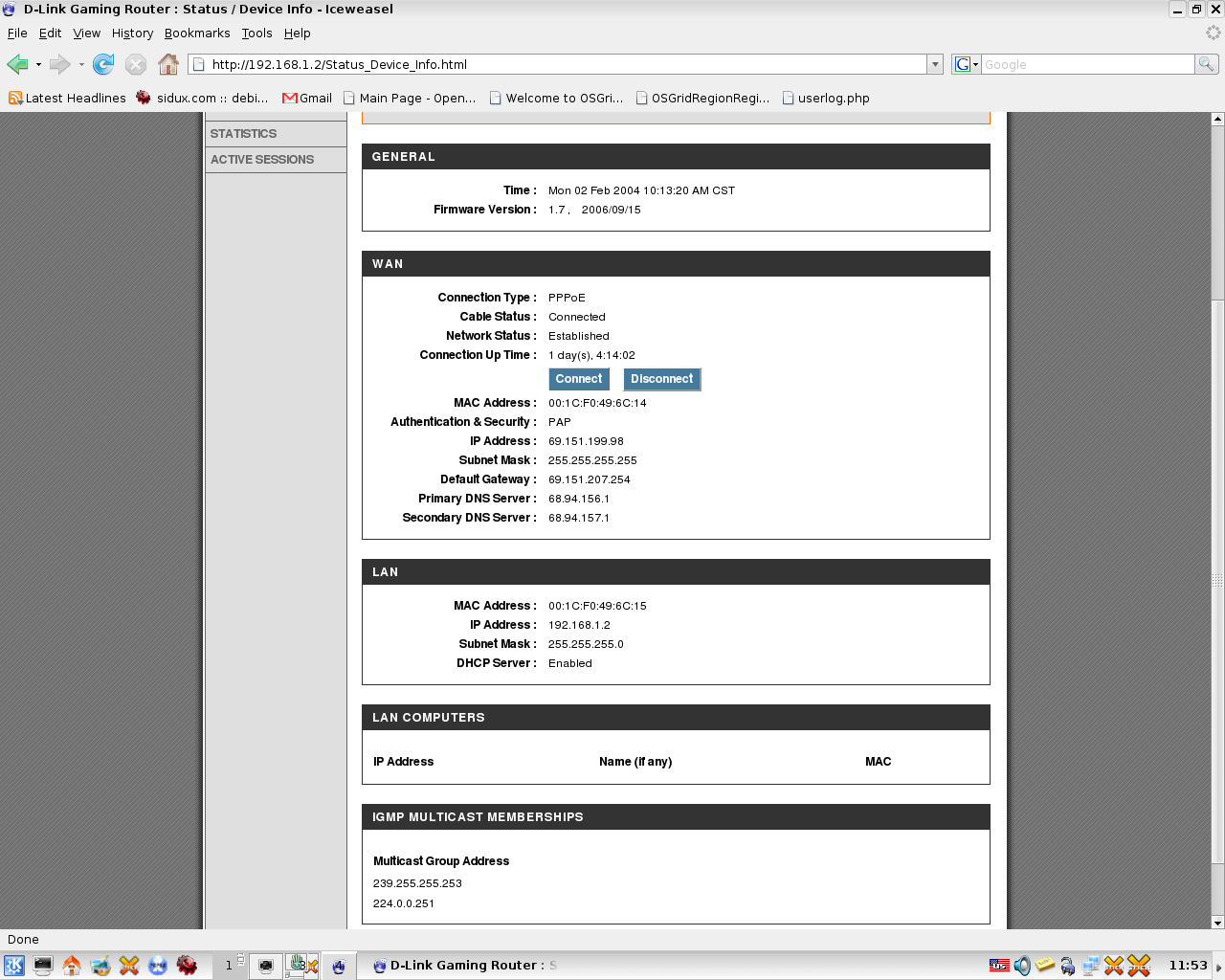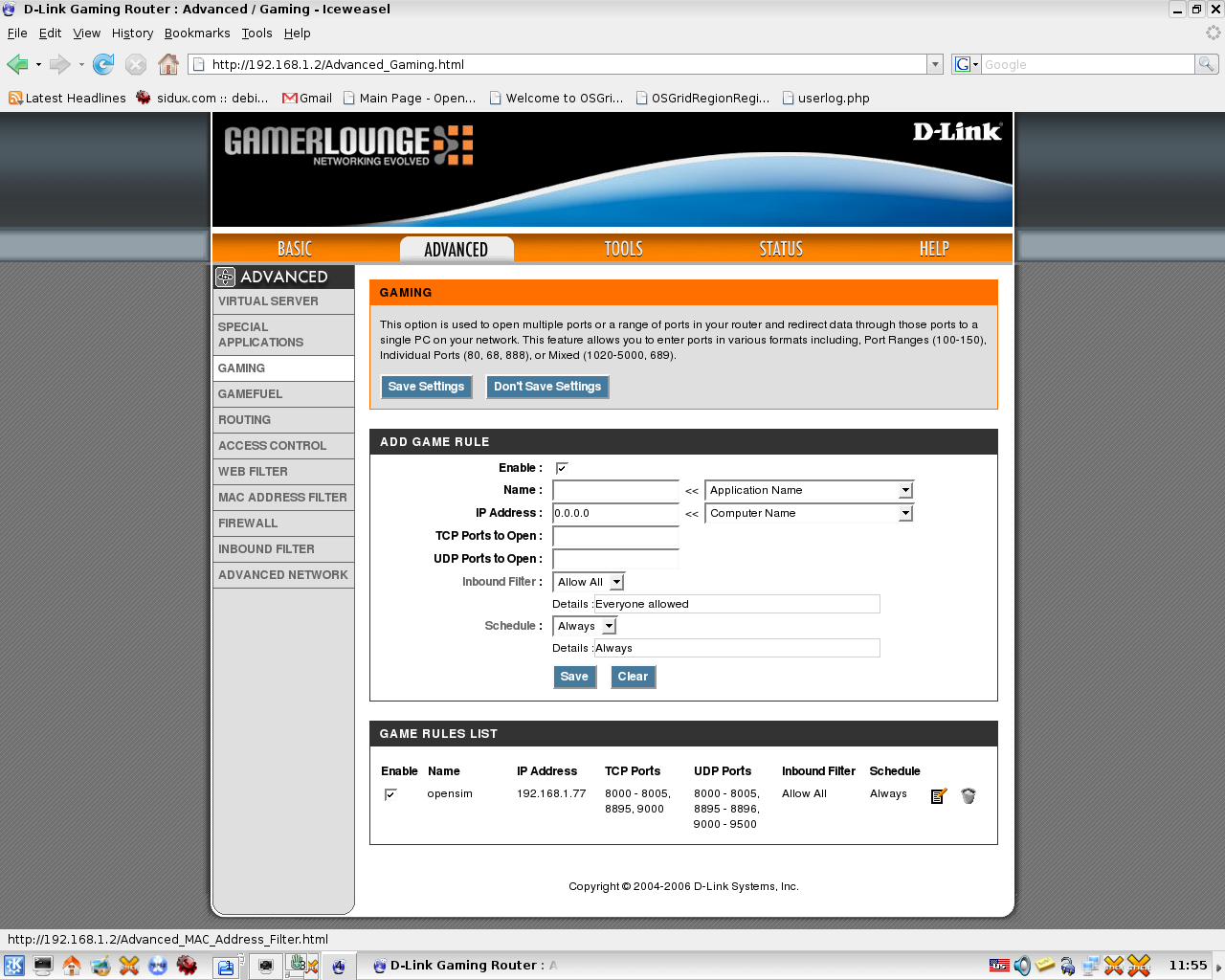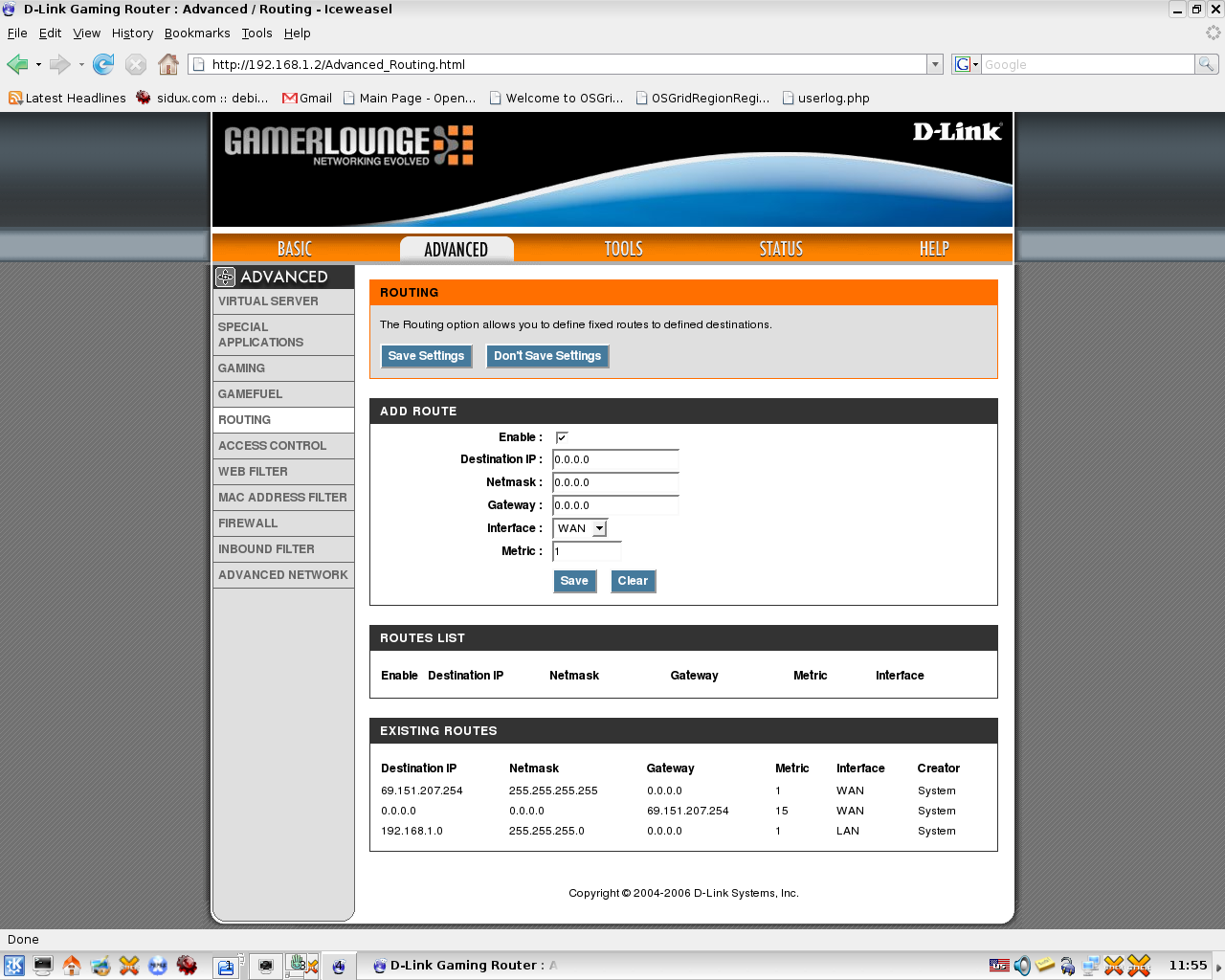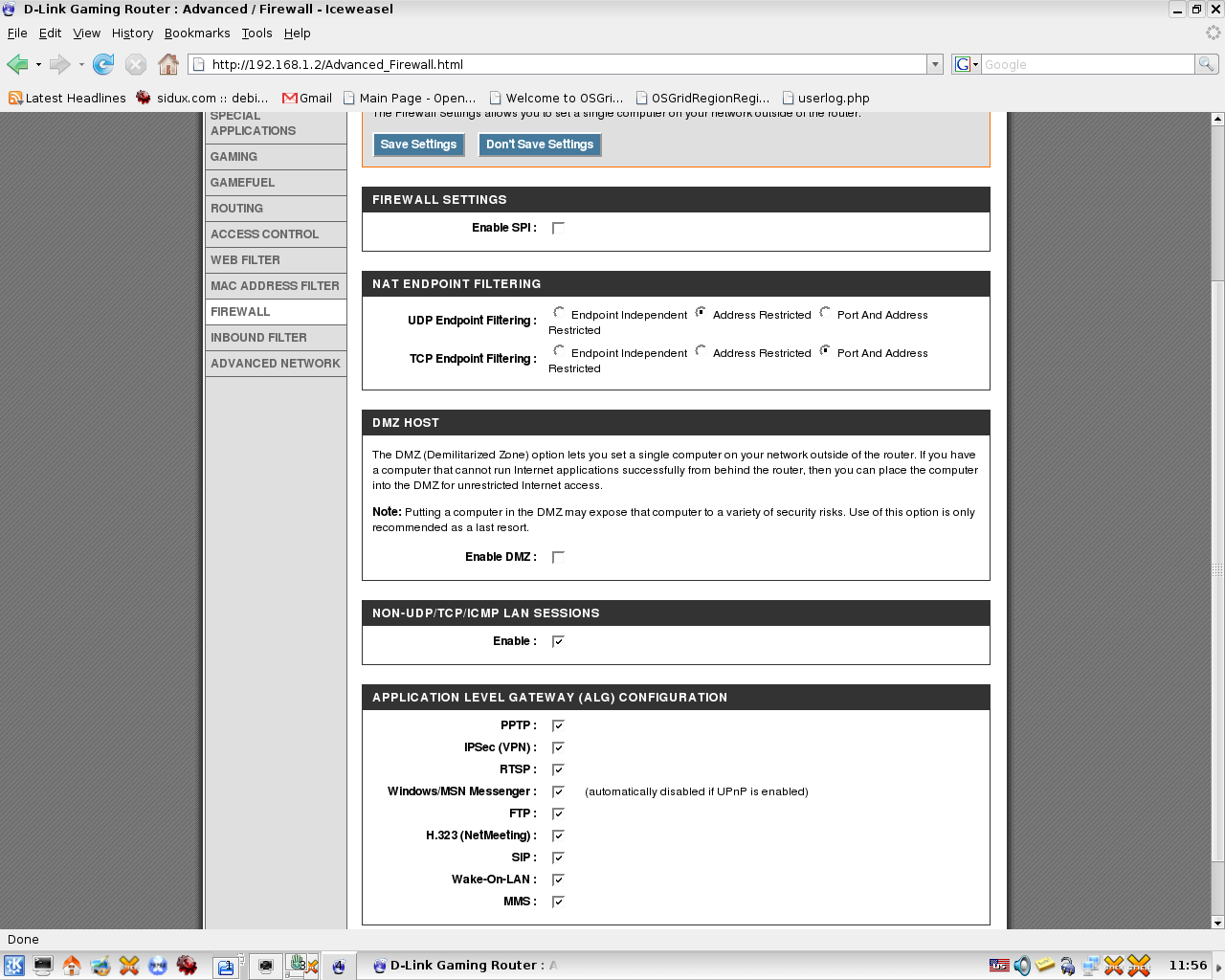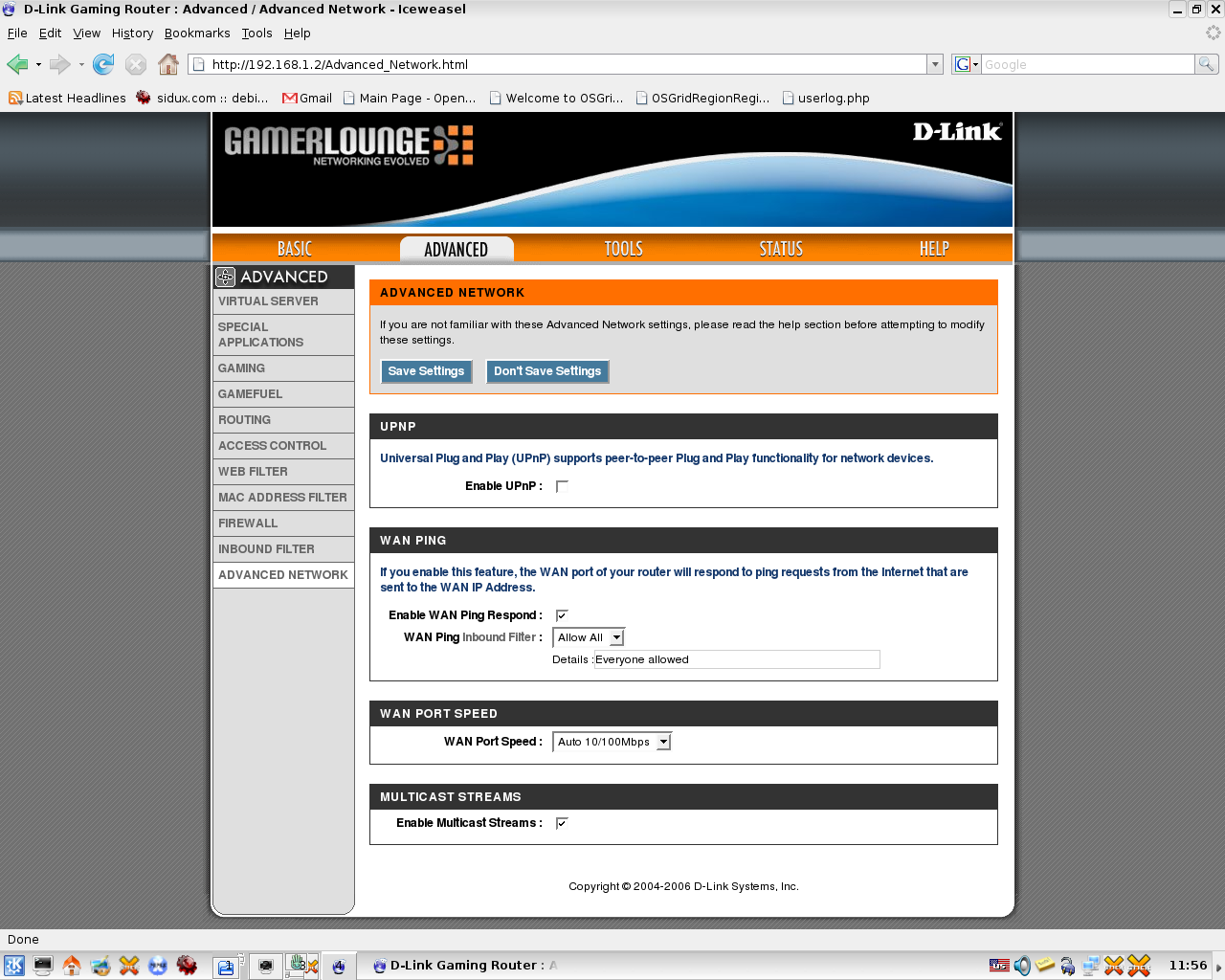Network Settings
From OpenSimulator
m (OpenSim:Network settings moved to Network Settings: Removing OpenSim namespace; not needed.) |
|||
| Line 134: | Line 134: | ||
NOTE: Contrary to what is displayed above, DHCP services are not required to operate OpenSimulator server software. | NOTE: Contrary to what is displayed above, DHCP services are not required to operate OpenSimulator server software. | ||
| + | [[Category:Configuration]] | ||
Revision as of 09:51, 15 January 2008
Network settings
OpenSim/Grid can be pretty tricky when it comes to setting it up on a private network this document covers what OpenSim needs in terms of network resources.
Ports used by OpenSim
OGS1 Grid Modes - Standard Port List
- TCP/8000 - Reserved
- TCP/8001 - Grid Server
- TCP/8002 - User Server and Login Services
- TCP/8003 - Asset Services
- TCP/8004 - Inventory Services
- TCP/8005 - Reserved (Dispatch Services)
Simulators
- UDP+TCP/9000 - Default First Simulator
- UDP+TCP/9001 - Default Second Simulator
etc.
Note: If you use your simulator in standalone mode, it is enough to open the UDP+TCP/9000 on your firewall.
Issues with NAT and Port Forwarding
If your host does not have a public IP address (eg it is hidden behind a home router) you will have issues hosting grid and region servers if you plan on connecting clients to it on both sides of the router, however this can be worked around through very careful application of port forwarding and use of DNS host files. Please note this is not guarunteed to work (and is most likely to fail), it is highly recommended to have a internet accessible public static IP for the server which is hosting the regions.
Method:
- Set the simulator listening IP address to your public facing IP address (that of the router concerned)
- Port forward the above ports through to the simulator on both UDP and TCP.
- Use an “ExternalAddress” of “somesimulator.somedomain.com” where you control the DNS for somedomain.com and can enter a “A Record” for ‘somesimulator.’ to your routers IP address.
- Create a “hosts” file (on windows, this is C:\Windows\System32\Drivers\etc\hosts and on Unix-type systems, this is /etc/hosts) entry on your internal client machines, for somesimulator.somedomain.com to your local LAN address for the simulator.
A solution for local connections if you have a ZyXEL DSL modem/router with NAT and Port Forwarding
This solution works with the ZyXEL Prestige 660ME-61 DSL Router. It may work with other models made by ZyXEL.
Method:
- Connect by TELNET to your ZyXEL DSL modem. Use the same IP address that you would if you were using the web interface. For example, the default ip on most Embarq ZyXEL DSL modems is 192.168.2.1.
telnet 192.168.2.1
- Enter your password. If you do not know it, try just pressing <ENTER> or ask your ISP for the password. They may or may not give it to you.
- Select menu option "24. System Maintenance" from the menu.
Copyright (c) 1994 - 2004 ZyXEL Communications Corp.
Prestige 660ME-61 Main Menu
Getting Started Advanced Management
1. General Setup 21. Filter Set Configuration
2. WAN Backup Setup 22. SNMP Configuration
3. LAN Setup 23. System Password
4. Internet Access Setup 24. System Maintenance
25. IP Routing Policy Setup
Advanced Applications 26. Schedule Setup
11. Remote Node Setup
12. Static Routing Setup
15. NAT Setup 99. Exit
Enter Menu Selection Number:
- Select menu option "8. Command Interpreter Mode" from the menu
Menu 24 - System Maintenance
1. System Status
2. System Information and Console Port Speed
3. Log and Trace
4. Diagnostic
5. Backup Configuration
6. Restore Configuration
7. Upload Firmware
8. Command Interpreter Mode
9. Call Control
10. Time and Date Setting
11. Remote Management
Enter Menu Selection Number:
- At the prompt type "ip nat loopback on".
Copyright (c) 1994 - 2004 ZyXEL Communications Corp. Sprint > ip nat loopback on
- At the prompt type "exit".
Sprint> exit
- Select menu option "99. Exit"
- Follow all other steps for configuring and starting your server as outlined in Getting Started.
A Solution for local connections if you have the DLink GamerLounge Extreme N router
Networking and router configurations have been responsible for 98% of all trouble I have had setting up and operating OpenSimulator region server software. Insuring that you have a capable router properly configured should be the first thing on the list of configuration checkpoints for a smooth and trouble-free path to OpenSimulator software operations in GridMode.
Below is a series of screen snapshots with the key pages of my router configuration interface with proper settings displayed.
The settings below assume that you have an otherwise working connection and do not touch on such subjects as port conflicts or logging your network onto your ISP's provider network.
** your status page should resemble this except for embedded site-specific details **
- provided that all information supplied in ~opensim/bin/OpenSim.ini and in your ~opensim/Regions/*.xml are properly configured, this should have you up and running.
NOTE: Contrary to what is displayed above, DHCP services are not required to operate OpenSimulator server software.
